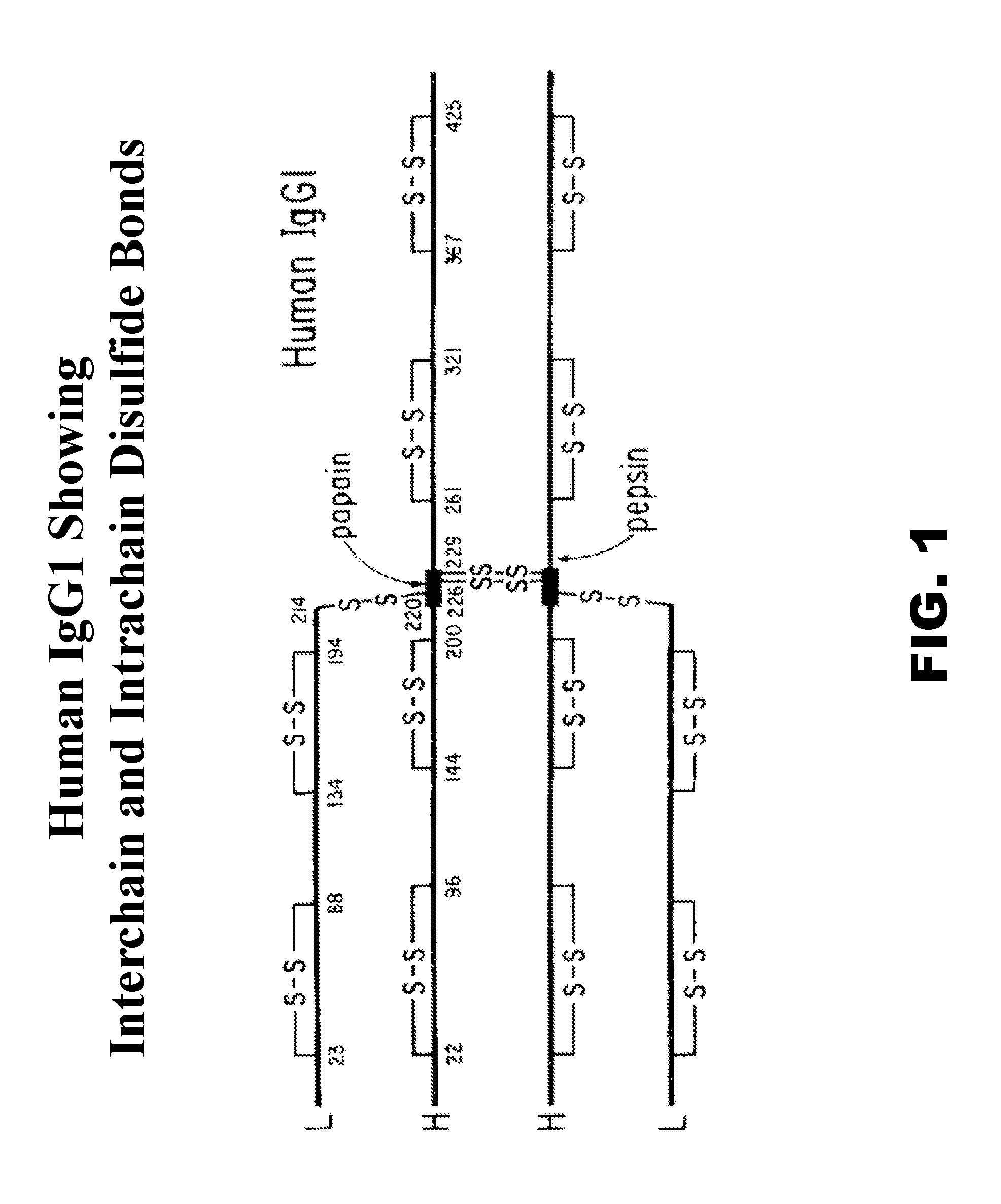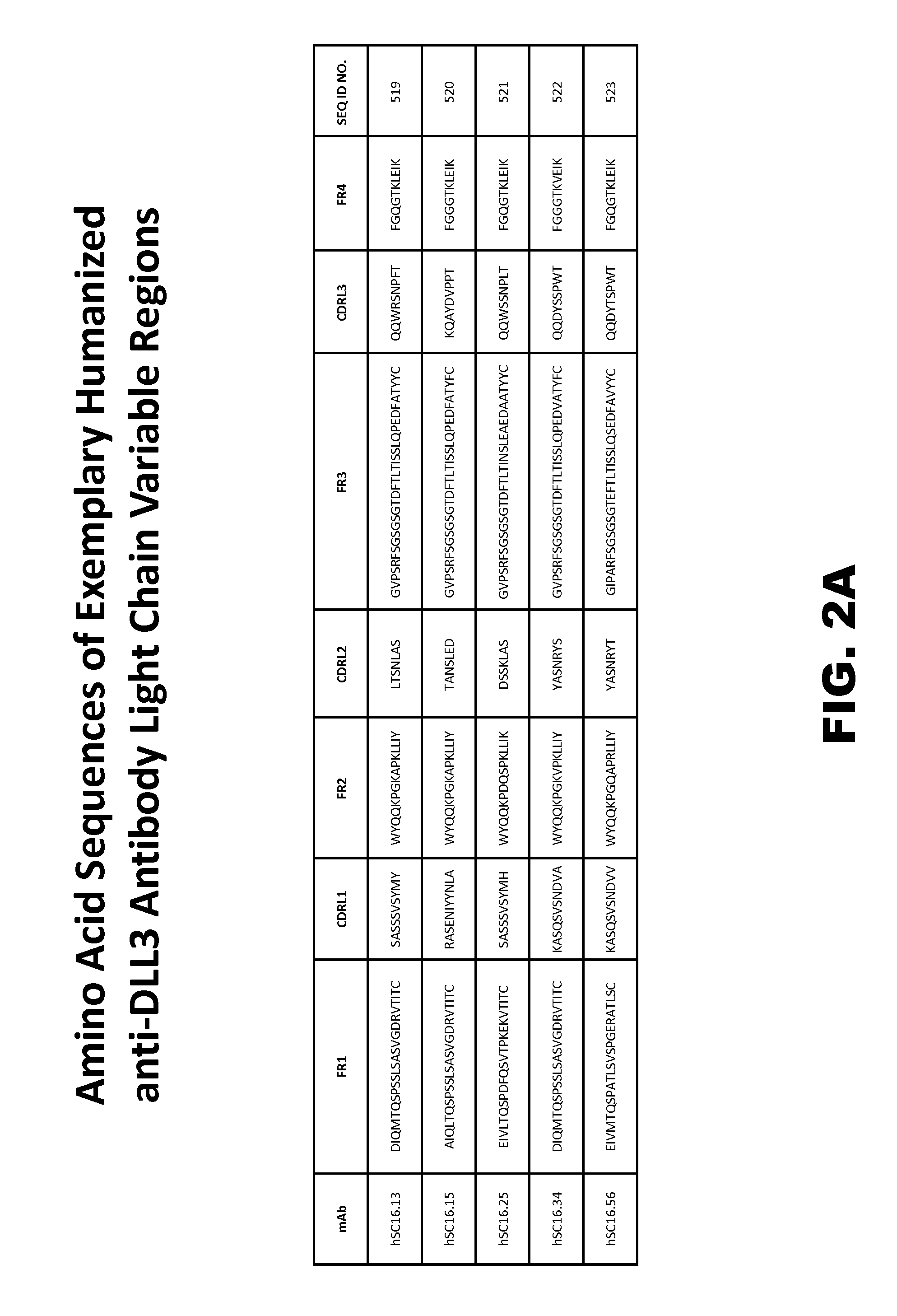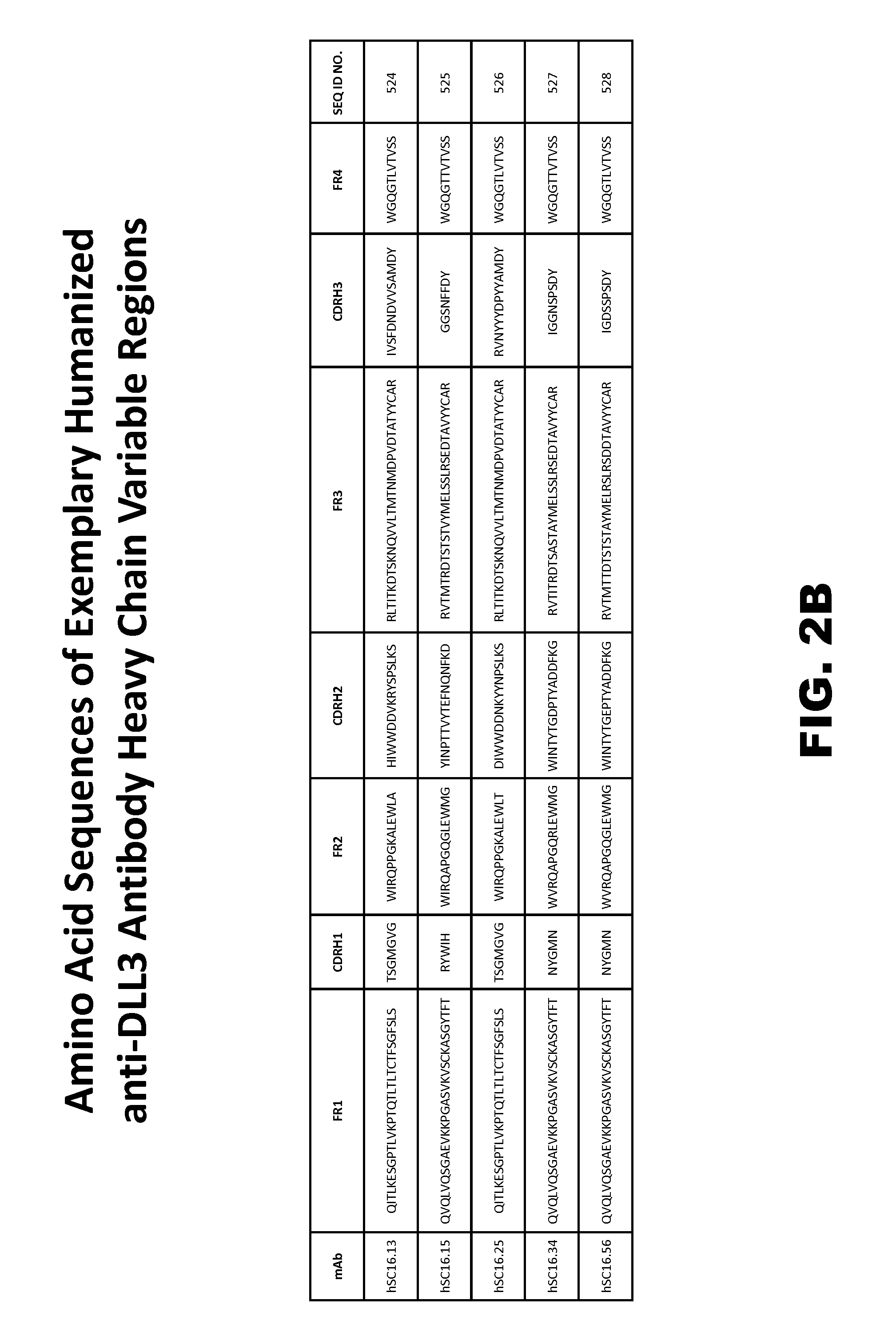Site-specific antibody conjugation methods and compositions
a site-specific antibody and conjugation method technology, applied in the field of site-specific antibody conjugation methods and compositions, can solve the problems of limiting the therapeutic index of the agent, affecting the therapeutic effect of the agent, so as to achieve favorable toxicity profile, favorable pharmacokinetic and pharmacodynamic properties, and improve the effect of the therapeutic index
- Summary
- Abstract
- Description
- Claims
- Application Information
AI Technical Summary
Benefits of technology
Problems solved by technology
Method used
Image
Examples
example 1
Generation of Anti-DLL3 Antibodies
[0342]Anti-DLL3 murine antibodies were produced as follows. In a first immunization campaign, three mice (one from each of the following strains: Balb / c, CD-1, FVB) were inoculated with human DLL3-fc protein (hDLL3-Fc) emulsified with an equal volume of TiterMax® or alum adjuvant. The hDLL3-Fc fusion construct was purchased from Adipogen International (Catalog No. AG-40A-0113). An initial immunization was performed with an emulsion of 10 μg hDLL3-Fc per mouse in TiterMax. Mice were then boosted biweekly with 5 μg hDLL3-Fc per mouse in alum adjuvant. The final injection prior to fusion was with 5 μg hDLL3-Fc per mouse in PBS.
[0343]In a second immunization campaign six mice (two each of the following strains: Balb / c, CD-1, FVB), were inoculated with human DLL3-His protein (hDLL3-His), emulsified with an equal volume of TiterMax® or alum adjuvant. Recombinant hDLL3-His protein was purified from the supernatants of CHO-S cells engineered to overexpress ...
example 2
Sequencing of Anti-DLL3 Antibodies
[0349]Based on the foregoing, a number of exemplary distinct monoclonal antibodies that bind immobilized human DLL3 or h293-hDLL3 cells with apparently high affinity were selected for sequencing and further analysis. Sequence analysis of the light chain variable regions and heavy chain variable regions from selected monoclonal antibodies generated in Example 1 confirmed that many had novel complementarity determining regions and often displayed novel VDJ arrangements.
[0350]Initially selected hybridoma cells expressing the desired antibodies were lysed in Trizol® reagent (Trizol® Plus RNA Purification System, Life Technologies) to prepare the RNA encoding the antibodies. Between 104 and 105 cells were re-suspended in 1 mL Trizol and shaken vigorously after addition of 200 μL chloroform. Samples were then centrifuged at 4° C. for 10 minutes and the aqueous phase was transferred to a fresh microfuge tube and an equal volume of 70% ethanol was added. Th...
example 3
Generation of Humanized Anti-Dll3 Antibodies
[0355]Certain murine antibodies generated as per Example 1 (termed SC16.13, SC16.15, SC16.25, SC16.34 and SC16.56) were used to derive humanized antibodies comprising murine CDRs grafted into a human acceptor antibody. In preferred embodiments the humanized heavy and light chain variable regions described in the instant Example may be incorporated in the disclosed site-specific conjugates as described below.
[0356]In this respect the murine antibodies were humanized with the assistance of a proprietary computer-aided CDR-grafting method (Abysis Database, UCL Business) and standard molecular engineering techniques as follows. Total RNA was extracted from the hybridomas and amplified as set forth in Example 2. Data regarding V, D and J gene segments of the VH and VL chains of the murine antibodies was obtained from the derived nucleic acid sequences. Human framework regions were selected and / or designed based on the highest homology between t...
PUM
| Property | Measurement | Unit |
|---|---|---|
| dissociation constant | aaaaa | aaaaa |
| dissociation constant | aaaaa | aaaaa |
| dissociation constant | aaaaa | aaaaa |
Abstract
Description
Claims
Application Information
 Login to View More
Login to View More - R&D
- Intellectual Property
- Life Sciences
- Materials
- Tech Scout
- Unparalleled Data Quality
- Higher Quality Content
- 60% Fewer Hallucinations
Browse by: Latest US Patents, China's latest patents, Technical Efficacy Thesaurus, Application Domain, Technology Topic, Popular Technical Reports.
© 2025 PatSnap. All rights reserved.Legal|Privacy policy|Modern Slavery Act Transparency Statement|Sitemap|About US| Contact US: help@patsnap.com



